Online Branding: Complete Guide To Building A Brand
Online branding is a marketing strategy that you can use to create brand awareness and consumer interest in a company. It is done by creating a website for the company and creating content that encourages interaction and customer engagement.
So you've decided to start a business. But where do you start? Is it too early to start developing a brand identity? Does a brand identity even matter if you're not planning to expand beyond your home country? The answer to both questions is yes. Even though branding may seem like something only businesses care about, consumers use brands to decide about products or services they plan to purchase. As a consumer, I must understand who you are and why you're different from your competition so I know what I'm getting into when I decide to do business with you.
This is a complete guide to building an online brand and generating a loyal audience. It's based on the idea that if you want to grow your business, you must have a solid online presence.
The reason for this is simple: it's where people spend most of their time, and they connect with brands, products and services. You're missing out on many potential clients and customers if you don't have an excellent online presence.
I will teach you everything you need to know about building an online presence. I'll cover everything from the basics of blogging to building a Facebook page and much more. I'll also explain why having an excellent online presence is essential for any business owner or entrepreneur.
Table of Contents
Why does Online Branding matter?
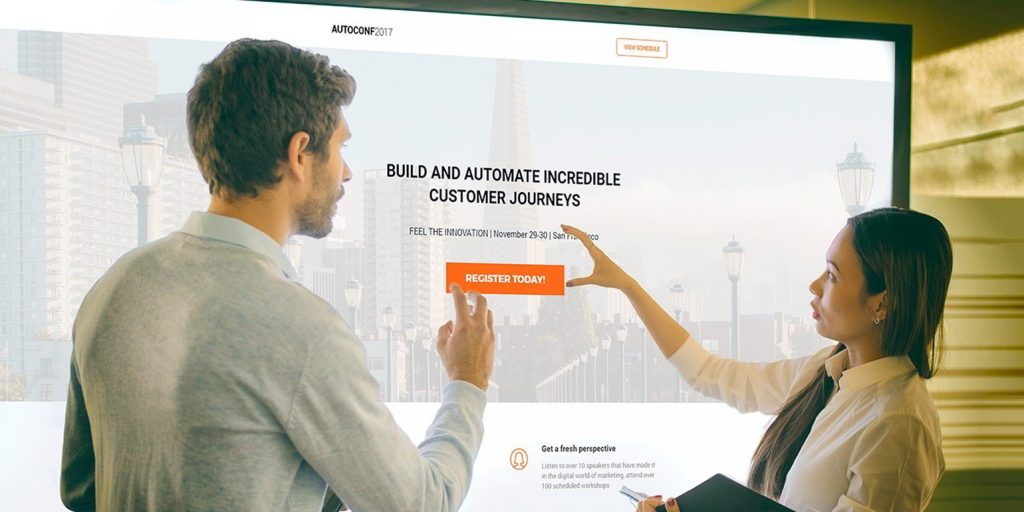
Brands are increasingly recognised for the quality of their products and services. When they're successful, people buy their products for the same reasons they bought them in the past—because of the brand name. However, consumers also expect to receive services and information related to their purchases.
When someone walks into a store and buys a car, they expect to get service and they expect to be able to read information about the product. If they walk into a restaurant, they expect to be able to see menus and read reviews.
But what about the Internet? Can businesses still succeed online without a web presence? While many brands have successfully adapted to the online environment, most business owners have yet to establish a web presence.
Brands have an opportunity to educate consumers on why a web presence is vital to their brand, why they should be using it, and how to use it effectively.
Why You Must Have a Website
A web presence is essential to a brand because consumers are more likely to buy a product or service from a brand that has a web presence. A web presence is also critical for building credibility since consumers trust websites more than any other medium.
Your web presence can provide valuable information for prospective customers, which helps them make decisions before making their first purchase. If you're a small business selling a unique product or service, your website can be the centrepiece of your company's marketing strategy.
In addition, a web presence is essential for communicating with current and prospective customers. It provides the tools to give them access to information about your products and services, which improves customer service.
How Should I Use a Web Presence to Communicate with Prospective Customers?
An effective web presence is designed to communicate the following messages to your prospective customers:
- You are a knowledgeable, reliable, and trusted resource.
- You are responsive to customer inquiries.
- You can help them solve their problems.
Your web presence should incorporate multiple forms of communication. It should have consistent branding and a look that matches your company's image.
It should include a website that is easy to navigate and the necessary contact information to facilitate customer inquiries.
It should offer information and content that answers questions or solves problems. In addition to customer service, the site should contain information on your products and services, including pricing and product specifications.
While the website is the centre of your web presence, you may also want to include social media sites such as Facebook, Twitter, and blogs. Social media provides a more interactive way to communicate with your customers and prospects, while a blog allows you to communicate with your customers, prospects, and other companies.
What About SEO?
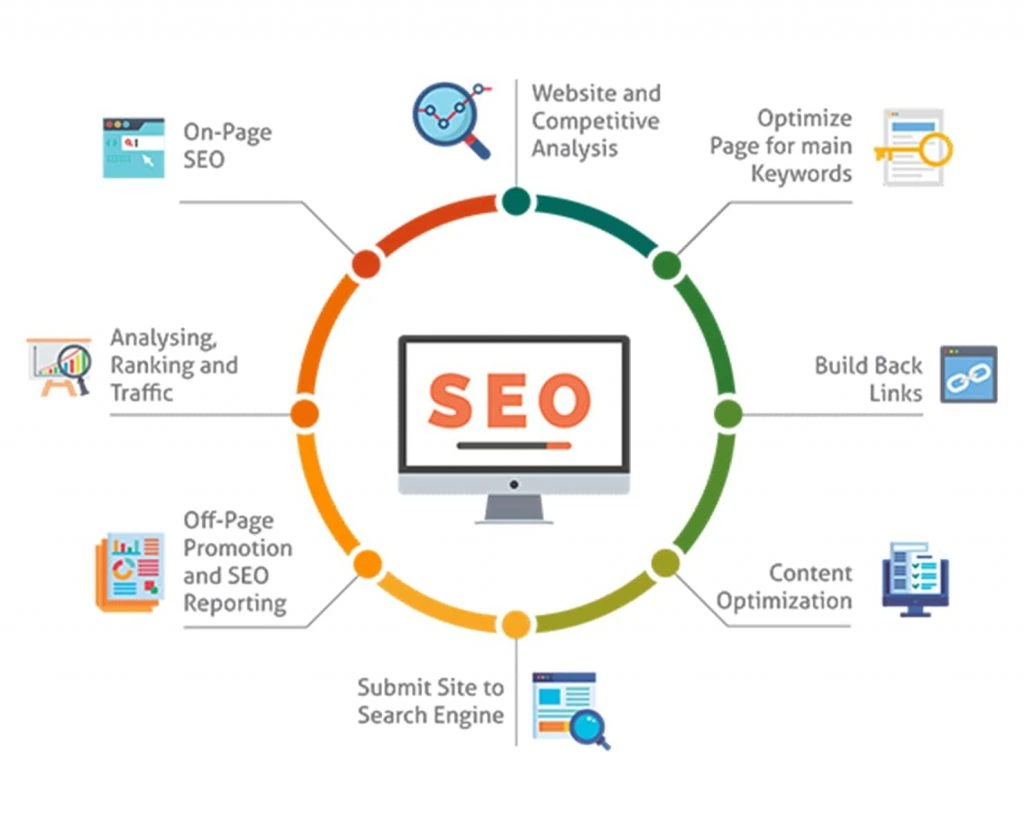
Search engine optimisation (SEO) is integral to your web presence. It's the process of improving the ranking of your website so that it appears on the results page of Google, Yahoo, Bing, or other search engines.
SEO is critical for businesses that sell online since most consumer searches are done through these sites. You may miss out on potential sales if your website is not ranked high in the search results.
You'll need to hire an SEO specialist to optimise your website for search engines. The specialist will assess your website's design and make changes to make it easier for the search engines to crawl and index.
Your SEO specialist will also make sure your content is keyword-rich. The keywords in your content are what the search engines use to rank your website, and they are often the exact words that consumers type into a search bar.
Are There Any Disadvantages to Having a Web Presence?
While having a web presence is valuable for your business, it comes at a cost. Many businesses choose to pay for hosting and domain registration, but that can quickly exceed the budget of a small business.
Many web hosting providers offer low-cost plans, which may be your only option if you're on a tight budget. Other hosting options can be expensive, with some of them costing up to $1,000 per year.
To make matters worse, domain names can be expensive. It costs up to $100 per year to maintain a domain name, which means it will cost you $1,000 to $3,000 per year to keep your brand name online.
If you're willing to pay for hosting and domain registration, however, there are some advantages to having a web presence.
When your web presence goes live, you'll be able to communicate with prospective and existing customers on an ongoing basis. In addition, it will be a great way to track your business's online performance since you'll be able to measure things such as traffic and sales.
A web presence allows you to create a strong brand identity and establish a positive online reputation. When people go online to research, they tend to look for information from a brand with a web presence.
The Power Of Social Media

When I first began working in brand design, I was often asked whether or not using social media impacted my online branding. As a consultant, I spent much time helping businesses understand how to leverage the power of social media for their online marketing.
While I found it fascinating to explore how social media could positively impact online branding, the reality is that social media is a tool. While it can certainly be a practical part of your online branding strategy, it is not an end.
At the same time, the real question isn't how it impacts your brand; it's how it impacts your customers. Social media can be a powerful branding tool because it allows you to connect with your audience. It gives you a direct line of communication with your customer base, enabling you to build relationships and connect with your target audience personally.
While many people see social media as a way to boost their company's visibility, it is also a way to connect with your audience. You can better understand what they want and need by connecting with customers personally. As a result, your business will grow more robust, and you'll find that social media becomes less of a distraction and more of an opportunity.
In addition to making personal connections with your audience, social media can also enhance your online presence by exposing you to other people's brands and businesses. Your customers are already interacting with several companies on the web, so when they come across your brand, it can be a powerful introduction.
Social media also makes it easy to respond to your audience. With a social media platform like Facebook, you can quickly engage your followers by answering their questions, giving them valuable information, and even asking for feedback. This is a great way to show that you care and are a genuine part of the community.
The key to leveraging social media for your online branding is understanding how to create a meaningful relationship with your audience. Make sure that your brand is visible and that you're creating content that your audience wants to see. As a result, your audience will keep coming back to interact with you and your brand.
How Should I Utilise Social Media for My Brand?
The most common way businesses use social media for branding is to post on their website and include links to their social media profiles. When followers click these links, they are taken directly to your profile.
Some brands also use social media to communicate directly with their audience. For example, the American Red Cross recently used Twitter to encourage people to donate blood. They created a contest that included a free meal for the person who collected the most units of blood. People had just two weeks to complete the challenge.
The fact that the Red Cross didn't simply provide a link to its donation page is an important lesson. Instead, they were able to take advantage of social media to connect with their followers on a personal level. Their fans responded to their message by donating. As a result, the Red Cross raised $200,000 in just two weeks.
When deciding on a social media platform, consider your target audience, their interests, and the kind of content they're looking for. The best approach is to build your strategy. For example, if you sell custom T-shirts online, you'd be wise to focus on social media platforms like Instagram. The photos people post there tend to be more artistic, so you'll have a better chance of connecting with your target market.
You'll also need to remember that the more time you spend on social media, the less time you have for your other business-related activities. If your online brand is your primary focus, you must keep this in mind and plan accordingly.
How Can I Utilise Social Media for My Business?
So how can you make social media work for your business? Here are a few things that may help:
Be Relevant
Before posting a picture or updating your status, ask yourself whether or not it will help your audience. Be sure to include relevant hashtags or keywords when you post.
This is especially important when posting on Facebook since Facebook is the most popular social media platform. People typically don't search for products or services on Facebook, so you'll have a more challenging time getting a share or liking if your posts aren't relevant.
If you post something that isn't relevant, you can change your social media profile to make it more relevant. Just be careful not to alienate your audience by taking away one of the ways that they connect with you.
Stay Consistent
Your brand should remain consistent on all your social media platforms. You'll have a better chance of attracting new customers if you post on one. As a result, you should maintain a strong presence on all the sites you use.
Another reason you should stay consistent is that it makes it easier for people to find your content. If you post similar content on different platforms, they will be more likely to search for you on those specific platforms. Therefore, if they are looking for information about a particular product, they're more likely to find what they need by searching on Facebook or Instagram.
Advertising
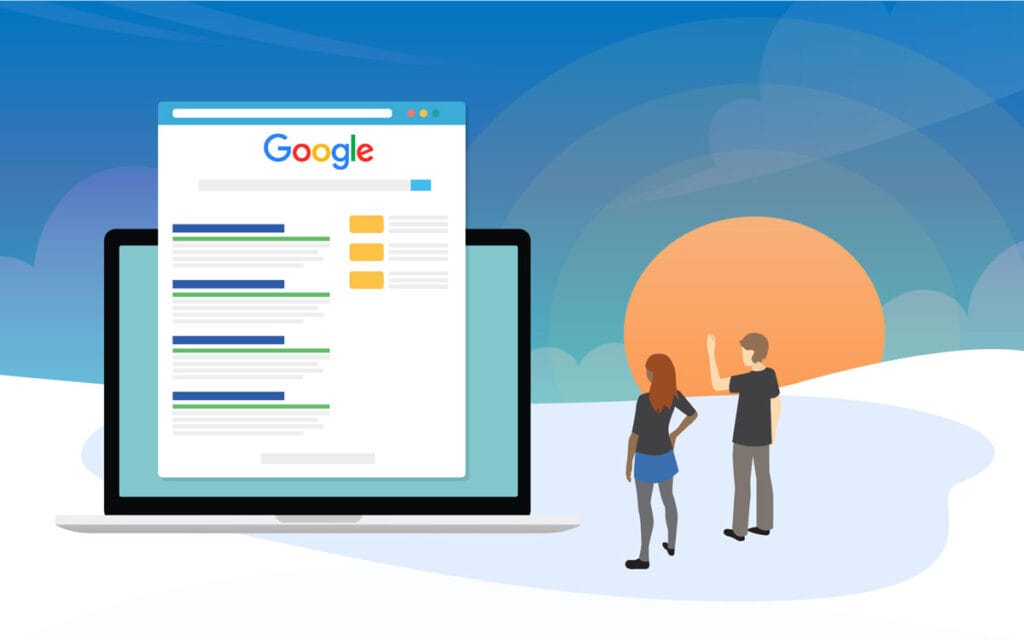
Online branding means communicating with consumers in real-time on various platforms such as social media, video content, and websites. If you have a presence on social media, you communicate your company's image through posts, comments, likes, and other activities.
Social media are easy to access and consume, allowing brands to interact with customers in real time.
Advertising has always been part of our culture and society. Advertising is no different, but the internet and social media are changing how ads are communicated and viewed. People are beginning to use social media as a resource for information rather than a medium for selling products and services. Social media use changes can be seen in how businesses and individuals use Facebook, Twitter, Instagram, and YouTube. Brands are utilising these platforms to communicate and interact with consumers, creating a more personal connection that improves brand loyalty.
Previously, brands would advertise through billboards, print, and television commercials. This was effective, but the internet and social media have made the advertisement process much more manageable. Today's consumers are more aware of how they are being marketed and know they can choose where they want to receive ads.
For example, consumers can see a television ad for a new product while in a grocery store and stop considering buying it before they even leave the store. These days, people can watch online videos while shopping or listening to music, so it's hard to ignore an ad in that context. Consumers can also see and respond to an ad on social media. This puts the onus on the company to connect with its audience and engage in conversation with them.
There are two main types of advertising. One is traditional when the company communicates its message through an ad on a printed page or television. The second type is digital, or Internet-based when the company communicates its message through an ad on social media or a website.
How does advertising influence your online branding?
Advertising on social media can be compelling. You can reinforce a company's image through these channels if it is already established. If the company is new, the potential is enormous for exposure, which helps establish your online reputation.
On the other hand, traditional advertising may not offer a company the exposure it needs to build an image. For example, consumers can ignore print advertisements or view them with scepticism. As a result, the company is less likely to be seen as credible and trustworthy.
While social media is an effective way to establish a company's credibility, the downside of this strategy is that the consumer can ignore the messages or even take a contrary position. The result is that the company may get a negative response, which could damage its online branding.
To improve your online branding, it is crucial to understand how the consumer sees your brand and the types of messages that are likely to resonate with them. By understanding this, you can create an effective online advertising strategy that will connect with consumers.
Promoting Your Website

Regarding online branding, your website is one of your best marketing tools, and its design plays a significant role in how it looks to potential customers. A beautifully designed website can convey professionalism and attract potential customers.
Your website is also where you can make first impressions. If it isn't optimised for search engines, visitors will leave immediately. But it's a good idea to spend time and money on a great website, even if you're planning to build one later.
You should first consider what you want to convey to customers. The main goal of your website is to attract new customers and convert them into loyal, repeat customers.
What Makes a Good Website?
A well-designed website has a few things going for it. First, it must be easy to navigate. Customers want to get where they need to go quickly and easily. That's why it's crucial to have clear navigation menus and links that lead them directly to the information they want.
The second thing a good website should do is showcase your products or services. Your website should be filled with content showcasing your company's value to its clients. Visitors should be able to see what your business does and how it solves problems for its customers.
You'll lose credibility and brand recognition if your website looks too similar to everyone else's. Make sure it stands out from the crowd and has an identity.
You should also optimise your website for search engine spiders. These robots visit websites to determine whether they're relevant to specific keywords. You want your website to show up high on search engine results.
A clean, simple website is an asset, not a liability. A website that's well-designed and easy to navigate is an immediate positive.
Make sure you take the time to test the look and function of your website. You're paying for a professional service. Don't just trust someone to build it for you.
You can do much of the work yourself. You can create your logo, write your copy, and add images and links.
But when it comes to a good website, it's a good idea to hire someone who knows what he's doing. Websites are a complicated matter. Even the most basic website needs a bit of expertise to make it work properly.
Doing the work yourself will save money, but a good designer can help ensure your website gets noticed by search engines and potential customers.
The question is: Which Type of Branding Do You Need?
A basic website is probably best if you're just starting a new business. If you've been in business for a while, you may already have a website. Either way, there's no need to reinvent the wheel. Just make sure it's well-designed and conveys a message about the kind of business you do.
It's not necessary to have a flashy website to promote your business. Just make sure that it's easy to navigate and communicates the message you want to convey.
Branding is a matter of personality, so your website must have a consistent look and feel. You should display your logo prominently on the site. And there should be a clear link back to your website in the footer, or bottom, of every page.
Content Marketing
Content marketing is one of the most powerful and effective ways to reach and connect with potential customers. It's also the perfect way to build a positive, authentic brand image.
Online branding occurs when the public is exposed to your company's content. For example, a popular food blog might include images of the restaurant's dishes in its posts. This exposure builds credibility, authority, and trust for the restaurant.
Why is Content Marketing so Important for Online Branding?
When potential customers see a company's content, they form opinions about it. If they like it, they're likely to want to visit the company's website. If they don't, they'll look elsewhere.
Think about your own experience. When was the last time you read a headline and immediately visited a company's website? Maybe it was the headline on a newspaper ad or a headline on a news article. If so, you've probably seen a company's content and formed an opinion.
How to Start Using Content Marketing for Online Branding?
Start by analysing your current company content. How is your content promoting your brand? How can you use the information in your existing content to create new, compelling content?
Start with your logo and other images. Determine the value of each image and the purpose of each photo. Create compelling content around the images and your message.
Think of ways to use your content in exciting ways. For example, a car manufacturer could create a series of blogs that showcase the features of its cars.
Another example is a technology firm that could write a blog about the latest innovations in cybersecurity. In this case, the firm could highlight its security expertise while also giving the public an inside look at how the company uses that knowledge.
What Types of Content Marketing Should I Use for Online Branding?
Use content marketing to create a collection of different types of content. Each type of content has a specific goal and should be used to achieve that goal.
For example, a travel blog might feature a series of articles that focus on specific destinations. These articles would give readers the chance to learn about the destination and learn more about the destination's history, culture, and other related subjects.
Other types of content marketing include:
- Product-focused
- Customer service
- Customer reviews
- Videos
- Infographics
- Research
As you choose the type of content that works best for your business, keep in mind that there is a difference between marketing and advertising. Marketing is about building credibility and trust. Advertising is about driving sales and conversion.
Link Building
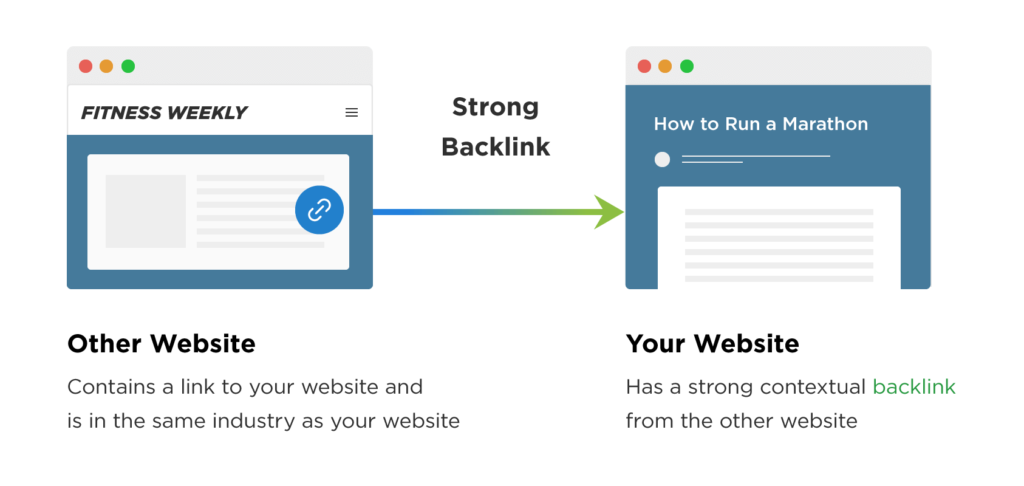
Backlinks play a vital role in the overall SEO of a website, and there are a few different types of backlinks that can be useful to a business owner or entrepreneur. We'll discuss the two primary types of backlinks that are relevant to this discussion and how to use them to optimise your overall site.
Backlinks are simply links from one page to another on a website. The source page is called the “anchor”, while the target page is called the “landing” page. These links improve search engine rankings and drive traffic to your landing pages.
There are two main types of backlinks that are relevant to this discussion:
- Outbound Links: Outbound links are external links that appear on other sites. For example, if you own a blog and you link to other sites from your blog, those sites become your outbound links.
- Internal Links: Internal links are links within your website. For example, if you post a blog post and share that content on your social media accounts, those posts become your internal links.
How to Use Backlinks to Optimise Your Website
Backlinks are a vital part of the SEO process. Understanding what you can do to increase your backlinks and optimise your site for increased visibility is essential.
You have control over the type of backlink, but the placement of these links is critical. Here's how you can use backlinks to optimise your site.
Create Content that is Related to Other Websites
Creating content related to other websites is one of the easiest ways to increase your backlinks. As mentioned earlier, outbound links are placed on external websites. You can place these links on other blogs, article directories, or sites that focus on similar topics.
Another way to create outbound links is to find a niche that you're passionate about and build a website around that topic. If you have a blog about music, for example, you can write blog posts about other genres and build a network of backlinks that point back to your site.
One last tip for creating outbound links is to join social media groups focused on a particular topic. For example, if you're a fitness blogger, you can join Facebook groups focused on weight loss and share your posts on their walls. This way, you can link to your website and other sites related to your niche.
Create Content That Link Back to Your Website
Creating content that links back to your site is also a great idea. When writing your articles and posts, you should include keywords related to the site you're creating.
For example, if you're creating a website related to the health field, you should include phrases like “weight loss tips” or “health tips.” By doing so, you're helping your site rank in the search engines for those terms.
You can also use tools that create backlinks to your website automatically. Many of these tools are free, such as Yoast SEO. They crawl the web and automatically place your backlinks on other websites related to the keywords you're using.
For more information on the backlink, check out our detailed guide on optimising your backlink profile.
The Importance Of Reputation Management
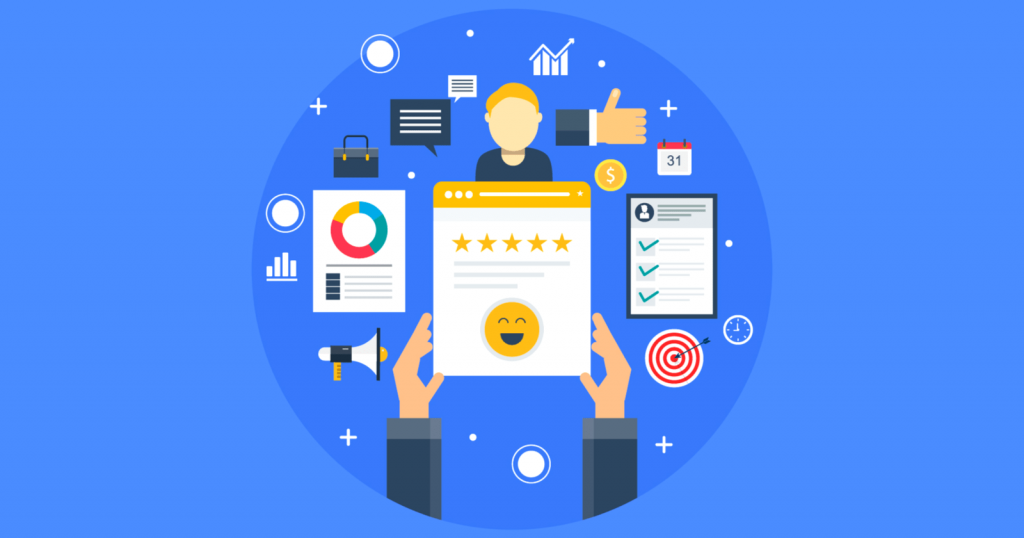
Online reputation management is vital in many aspects of our lives. Social media plays a significant role in our job profile, business or personal life. We rely on the reputation we build online and how people perceive our presence to build a better reputation online.
There are many ways through which our reputation can get affected. Some of the factors that may lead to a negative reputation include:
- We post false information.
- We are not up-to-date with the news.
- We give out incorrect information.
- We do not respond to customer queries.
- We delete user-generated content.
- We spam
- We share inappropriate content.
- We misuse the products.
- We fail to respond to complaints.
- We are inconsistent.
- We make careless mistakes.
The list is endless
Nowadays, the digital world is a vast place where people get exposed to any information. Most of them share information on social media which is accessible to everyone. This has led to the growth of fake reviews and a bad online reputation. People concerned about their online reputation must keep up to date with the latest news and be aware of the type of content they put online.
Managing Reputation
We should be aware that the reputation we build online is very fragile and can quickly get damaged. Many companies and people have been affected due to the tarnished online reputation. If we try to address the issue incorrectly, it can harm us. People do many things to control their reputation, which can affect their online presence. There are several types of reputation management methods that are commonly used. These include:
- Customer support
- Social media advertising
- Blogging
- Content creation
- SEO
- PPC
- Reputation management
To manage a reputation, knowing what's wrong with it is necessary. This is why reputation management must start with assessing the situation and taking action to resolve it. Various techniques are used to fix a bad reputation. These methods are listed below:
1 – Customer support
This is the first method of fixing a bad reputation. This is very helpful in resolving the problem and rebuilding the reputation. Many online services like Help-desk are available to help fix the issue. To avoid any damage to the reputation, it is necessary to provide complete and detailed information about the situation.
2 – Social media advertising
Social media is an integral part of our lives. Most people use social media to share their views, experiences, opinions and other information. This is why people should be aware of what they post and the kind of information they share.
3 – Blogging
Blogging is the best way to share knowledge with the world. This is the best way to build a positive reputation online. It can be done by any blogger interested in sharing their views. This is a great way to increase awareness and improve the reputation.
4 – Content creation
Content creation is an easy way to manage reputation. You can write a blog or create content for your company website or any other platform. You should provide relevant and informative content that helps to improve the reputation.
5 – SEO
Search engine optimisation is a powerful tool for improving online presence. This is a great way to increase the visibility of your brand.
6 – PPC
Pay-per-click is an effective way to promote your company. PPC ads can be displayed on search engines and attract more traffic to your site.
Reputation management is a powerful technique to maintain a positive image. There are various websites available which can manage your reputation online. This is the best way to deal with your reputation and fix the issues.
Reputation management is necessary for businesses trying to grow in their market. A well-managed reputation can bring much business success.
Wrapping Up
As a digital entrepreneur, you have a unique opportunity to grow your brand online. There are so many different ways you can get your message out there.
You can attract new customers and earn money if you have a product, service, or just some personal brand. You can use the internet to promote your brand and turn your passion into a profitable business.
With the right strategy and mindset, you can achieve success.
Want to learn more about branding online? Get my free newsletter on how to create your brand below!
